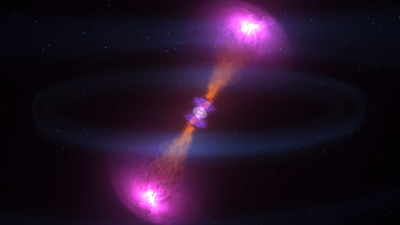Astrophysical Extremes and Life Cycles of the Elements:
Opportunities from the MeV Gamma-ray Sky
Splinter Meeting at the 231st Meeting of the American Astronomical Society in Washington, DC.
Wednesday, January 10, 2018 from 1:00 pm - 4:30 pm
Location: National Harbor 8 at the Gaylord National
SOC: Fabian Kislat, Andreas Zoglauer, Roopesh Ojha
 The MeV domain is one of the most underexplored windows on the Universe. From astrophysical jets and extreme physics of compact objects to a large population of unidentified objects, fundamental astrophysics questions can be addressed by a mission that opens a window into the MeV range. The time is right for an MeV mission. Fermi-LAT observations at GeV energies have opened a window to a rich and varied ensemble of astrophysical sources, and demonstrate the promise of an equally rich return from opening the MeV band. Secondly, we are at the dawn of the multimessenger era, with the recent discovery of high energy astrophysical neutrinos by IceCube and the first direct observation of gravitational waves by LIGO. By virtue of its focus on extreme environments, a medium energy gamma-ray surveyor is an excellent partner in these new scientific endeavors.
The MeV domain is one of the most underexplored windows on the Universe. From astrophysical jets and extreme physics of compact objects to a large population of unidentified objects, fundamental astrophysics questions can be addressed by a mission that opens a window into the MeV range. The time is right for an MeV mission. Fermi-LAT observations at GeV energies have opened a window to a rich and varied ensemble of astrophysical sources, and demonstrate the promise of an equally rich return from opening the MeV band. Secondly, we are at the dawn of the multimessenger era, with the recent discovery of high energy astrophysical neutrinos by IceCube and the first direct observation of gravitational waves by LIGO. By virtue of its focus on extreme environments, a medium energy gamma-ray surveyor is an excellent partner in these new scientific endeavors.
This splinter meeting will seek to further the conversation on the indispensable science motivating new missions in this spectral window.
Speakers
- 1:00-1:30: Exploring Hidden Emission from Neutron Stars
- Dr. Alice K. Harding (NASA Goddard Space Flight Center)
- Download: PDF
- 1:30-2:00: Probing Cosmic Chemical Evolution with MeV Photons
- Prof. Dieter H. Hartmann (Clemson University, Department of Physics and Astronomy)
- Download: PDF
- 2:00-2:30: Explosions in the MeV Sky: Gamma-ray Bursts and Gravitational Wave Counterparts
- Dr. Judith Racusin (NASA Goddard Space Flight Center)
- 2:30-3:00: Break
- 3:00-3:30: Prospects for AGN Studies with AMEGO
- Prof. Eileen T. Meyer (University of Maryland Baltimore County)
- 3:30-4:00: Searching for Dark Matter in the MeV Regime
- Dr. Tim Linden (Ohio State University)
- DownloadPDF
- 4:00-4:30: AMEGO: All-Sky Medium Energy Gamma Ray Observatory - Instrument and Mission Overview
- Dr. Richard S. Woolf (Space Science Division, U.S. Naval Research Laboratory, Washington, DC)
- Download: PDF

